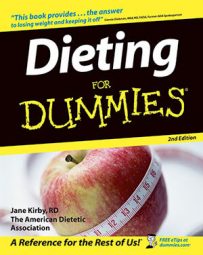Grains are low in fat and provide essential vitamins, minerals, and fiber. They are the source of complex carbohydrates in your diet. But the wrong kinds of grain products can lead you to eat too many calories without getting beneficial nutrients.
The grains group has been the source of the greatest controversy among health professionals. Critics think that too much emphasis is placed on carbohydrates as a foundation of a healthy diet and that the number of recommended servings is too high.
It’s true that croissants, donuts, cookies, muffins, cake, and other high fat and sugar items are in this group because they can fit into a healthy diet — just not every day, and probably not more than once a week if you’re trying to lose weight. Because they provide more calories than nutrients, keep them to a minimum. The healthier choice is anything whole grain in a reasonable portion.
Make sure that at least three of your grain servings each day are whole grains — whole-wheat bread or cereal, for example. Use the ingredient labels to find the products with whole grains: You want whole wheat or other whole grain to be the first ingredient. Sugar, oil, and fats should be last on the list, if they appear at all.
Serving sizes for grains include the following:
1 slice of bread
Half a hamburger or hot dog bun
Half an English muffin or a 2 1/2-inch bagel
1 small roll, biscuit, or muffin (about 1 ounce each)
1 ounce ready-to-eat cereal
5 to 6 small crackers (saltine size)
2 to 3 large crackers (graham cracker square size)
4-inch pita bread (white or wheat)
3 medium hard breadsticks, about 4 3/4 inches long
9 animal crackers
1/2 cup cooked cereal, pasta, or rice
One 7-inch flour or corn tortilla
2 corn taco shells
Nine 3-ring pretzels or 2 pretzel rods
1/5 of a 10-inch angel food cake
1/16 of a two-layer cake
3 rice or popcorn cakes
2 cups air-popped popcorn
12 tortilla chips
Fiber comes from the grains group, the fruit and vegetable group, legumes in the meat group and from nuts. Essentially, fiber is a carbohydrate that can’t be digested. A healthy diet has 25 to 35 grams each day. High-fiber diets are associated with less heart disease and diabetes.

